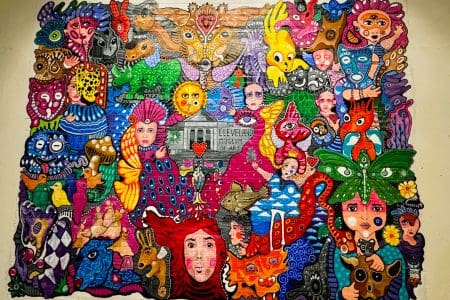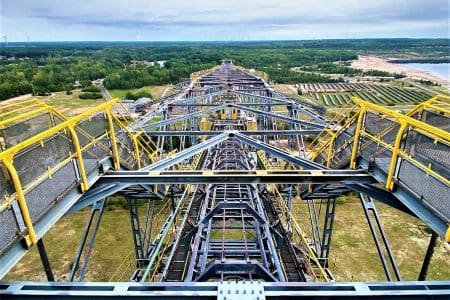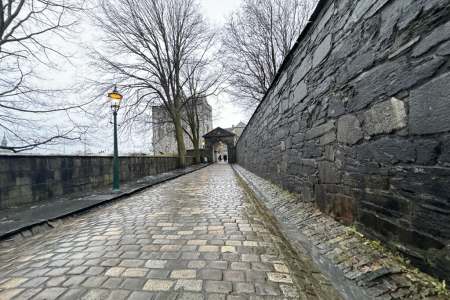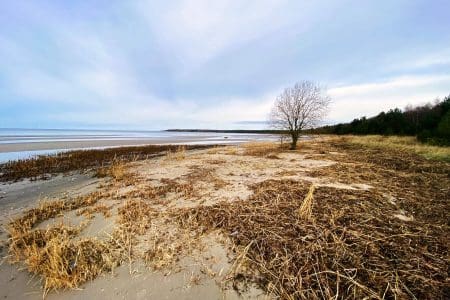Mark Bibby Jackson joins an accessible travel tour in Edersee Germany visiting the Eder Dam, and going on forest and tree top walks all accessible for wheelchair users.
Travelling can be an inspiring experience. Sometimes it is the places you visit, other times the people you meet there but also it can be the people you travel with that can be inspiring. I hope to think that I am a considerate and thoughtful traveller, but my recent trip to Edersee in Germany showed me how little I had considered what travelling means to people with accessibility issues.
On our first afternoon we went on a guided tour of Bad Wildungen, a medieval farmers’ town which had half-timbered buildings and a pleasant looking church. Pleasant-looking because we could not actually visit it as it was not wheelchair accessible. As I walked along the quaint cobbled-stone streets, my two wheelchair-bound colleagues struggled with the uneven surfaces.
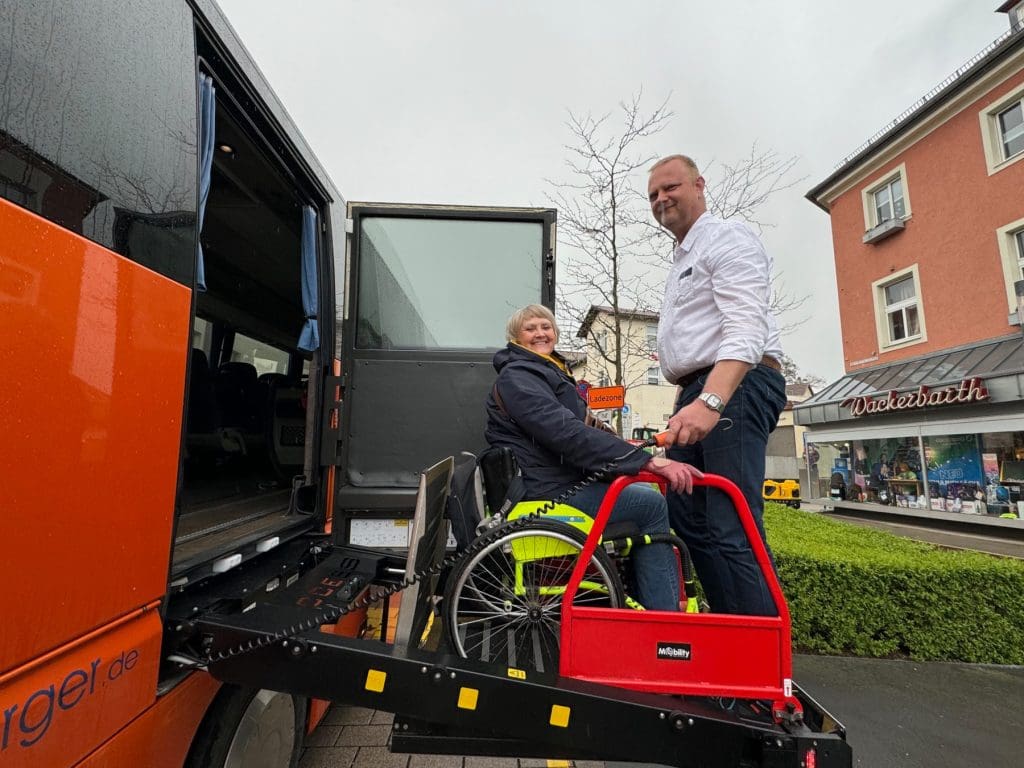
I soon become aware that this was the reality of travelling to them. Debbie North, who acts as Disability and Access Ambassador for the countryside to the UK’s Cabinet Office, explained that if she got angry every time she encountered obstacles on her trips she would be permanently angry. And anyone who has met Debbie would agree she is not an angry woman.
However, she also shares stories of when she was trapped for three hours on the S Bahn in Berlin because none of the lifts were working and the time she spent an afternoon in a petrol station instead of a wonderful medieval castle because it was not accessible.
Eder Dam Germany and the Dambusters
Earlier in the day we were conveyed by bus to the wonderful Flair Hotel in Werbetel. This sits on the banks of the Reiherbach Lake which connects with the Eder Lake (Edersee) in Waldeck Natural Park. My suite had glorious views of the lake including what appeared to be a submerged church.
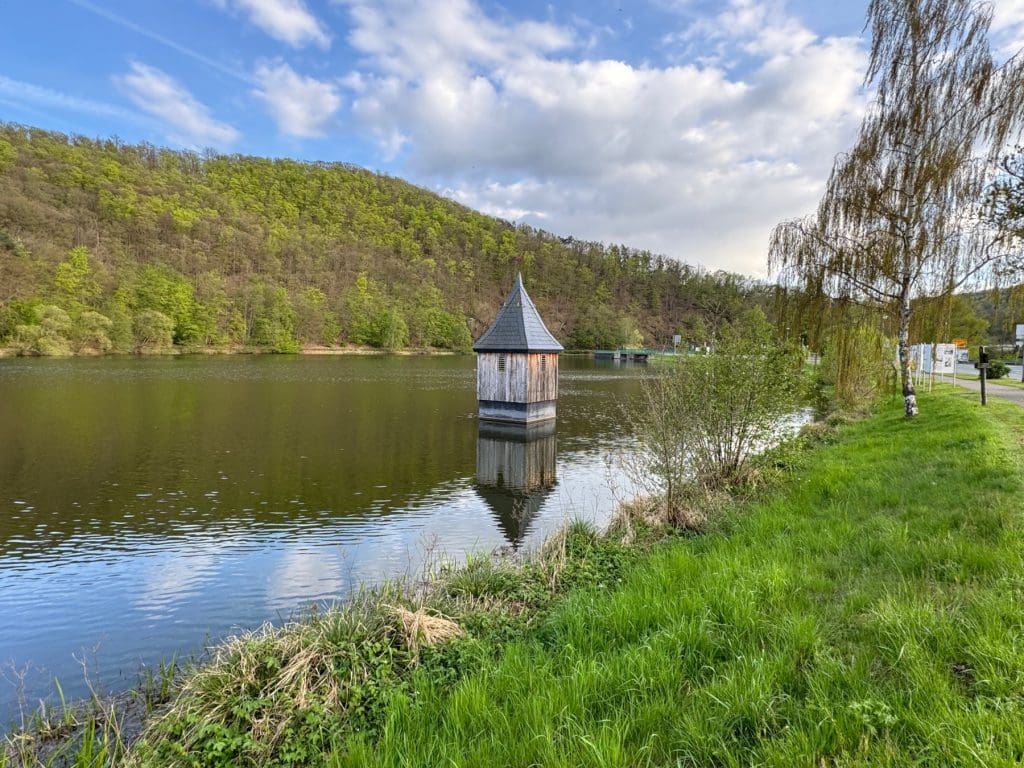
It was the following day when we were driven to the nearby Eder Dam that I realised the sunken church steeple was actually a 2014 centenary tribute to the three villages flooded when the dam was created at the start of the last century.
The 50-metre high Eder dam was one of the three attacked by the Dambusters in the Second World War. Despite the triumphal nature of the classic 1955 film of the same name, the raid was only partially successful. 53 airmen and 1,300 German civilians died in the three raids and subsequent flooding, but the effect on Germany’s industrial production was minimal.
You can tell where the dam was breached by the white stones in the main image to this article. It was repaired relatively quickly by forced labour from Buchenwald Concentration Camp, many died in the process.
Boat Trip on the Edersee Germany
The dam contains the waters of the Edersee, the third largest reservoir in Germany. After our visit to the Eder Dam, we took a boat ride around the lake on the Edersee Star. Fortunately the sun decided to come out for our hour-long ride, which made it even more pleasant.
Although it was nowhere near as warm as on my recent boat trip around Kotor Bay, it was still most pleasant to stand in the sun, while our boat drifted around the shimmering waters drenched in the noise of chattering schoolkids enjoying their release from lessons.
We sailed up to the dam which allowed us to see it from a fresh perspective.
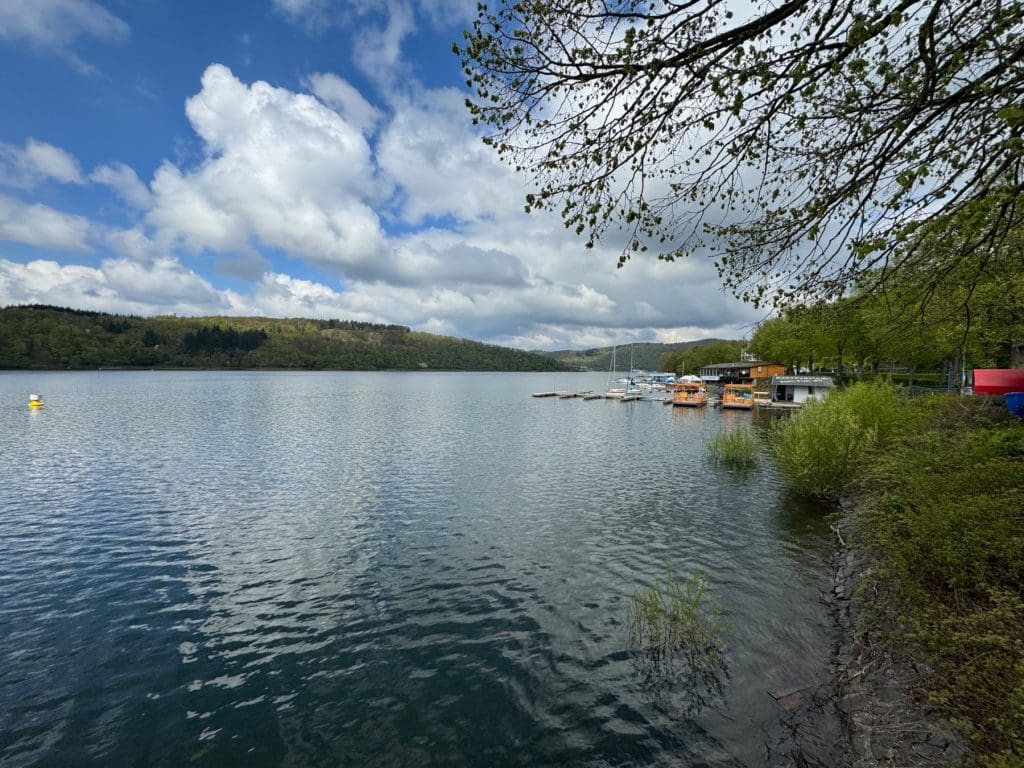
On the Bus
Our guide Sören Hoika has many years’ experience of running accessibility tours.
He pointed out that our bus was especially equipped for passengers in wheelchairs. A lift raises the wheelchair and passenger to the coach, where a trolly system could convey passengers to seats or even to the toilet at the rear of the bus. Debbie agreed that it was a very good bus.
It could also take several wheelchairs at the same time, although this meant the bus was a couple of metres longer than a normal bus, something which made turning tight corners on country roads a challenge for our excellent driver Sven, who also operated the lift.
We drove past Waldeck Castle as we went to our next attraction the Kellerwald-Edersee National Park.
Just like the church in Bad Wildungen, the castle is not fully accessible so the treasures of this glorious looking 11th century castle remain a mystery to me. While at the Eder dam, Debbie had quipped “nice wall”, reminding me of her petrol station anecdote. For, as I could see down into the valley below her view was purely of the brickwork and pointing. I took a photograph for her to see, but really this was painfully inadequate.
A Walk in Kellerwald-Edersee National Park
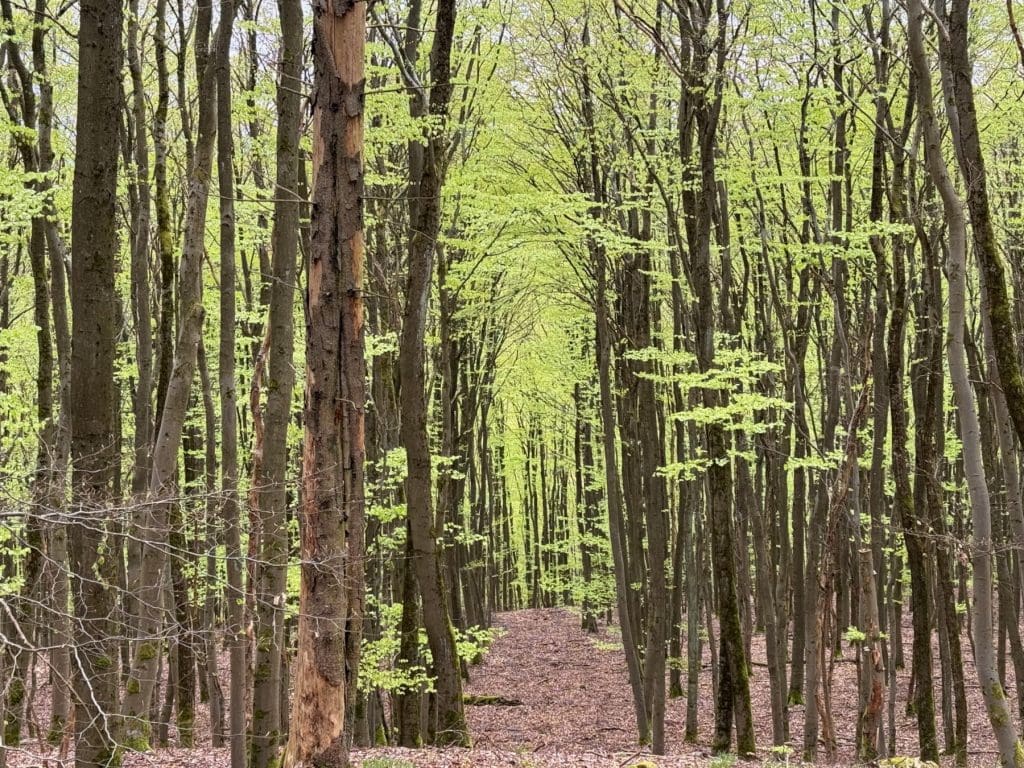
Another aspect of accessibility tours is you have to allow more time than on a conventional tour.
Sören explains that every time he is giving an itinerary, he has to adjust the schedule. Sometimes he has nine people in wheelchairs. A toilet break can take up to an hour-and-a-half, and that is when there are accessible toilets.
After our boat trip we go to the Kellerwald-Edersee National Park where a couple of all-terrain wheelchairs are waiting for Debbie and Zoltan, a Hungarian journalist who was part of our group.
Debbie explains they have all-terrain wheelchairs in the Yorkshire Dales she loves. They are free to use – you just have to book in advance. The vehicles have opened up areas of the countryside that otherwise would be denied wheelchair users, she says.
Kellerwald-Edersee National Park is Tourism for All certified, which includes the visually and hearing impaired as well as those in wheelchairs. The park has a number of information boards providing information in different languages including English. According to our guide Jens Knopf, its head of communications, Kellerwald-Edersee is one of the youngest of the 16 national parks in Germany. Covering more than 5,000 hectares it is the most extensive beech forest left in Central Europe, without a road or settlement.
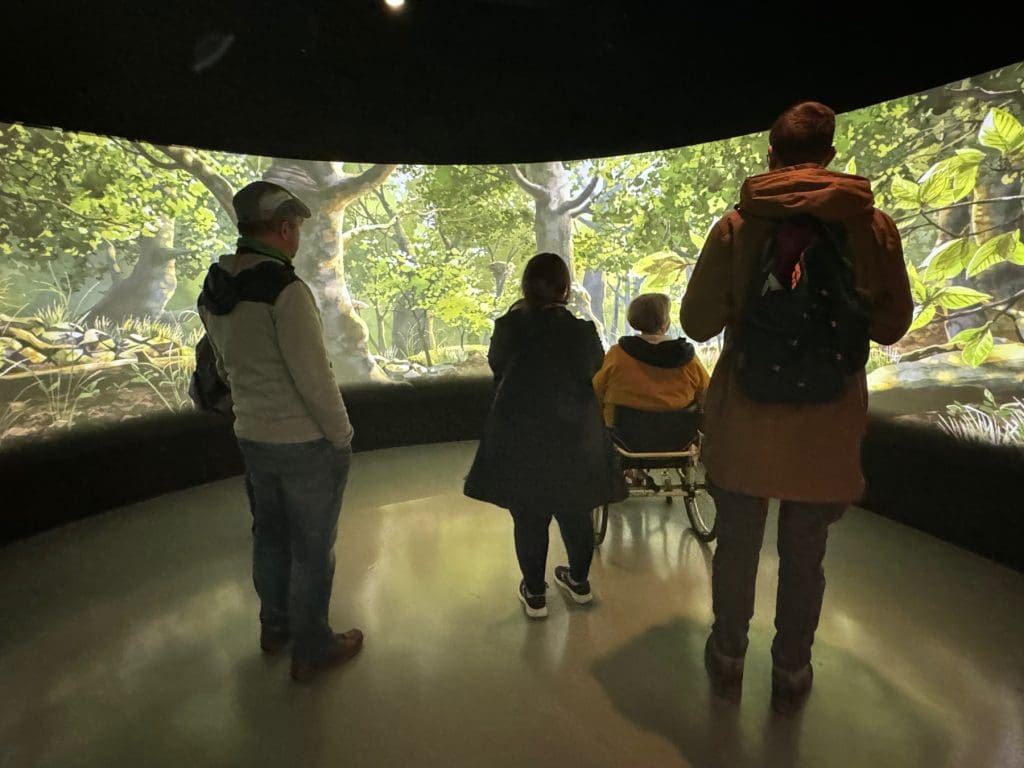
The park used to be the hunting ground for the Prince of Waldeck which explains how it is so well preserved. Our walk (or ride) takes us just over a kilometre to the Quernst-Kapell, which is the only church in a national park in Germany. Along the way I can just make out the sound of a woodpecker in the distance above Debbie’s laughter.
The solitude and quietness of the national park has made it the habitat for the European wild cat, as well as the breeding ground for the migratory black stork.
Jens explains that Kellerwald-Edersee is a role model region for accessibility so we should not expect similar accessibility in all Germany’s national parks.
The park has also provided a vital regeneration for the region, he adds. The nearby village Frankenau is one of the poorest in Germany. At the outset there was a lot of opposition originally from the local community who feared it would restrict what they could do in their forest, but they have been won around to its benefits.
A short bus ride takes us to the park’s information centre, which was built in 2007. This has an interesting and informative interactive exhibition (€6.50) about the circle of life, which comes highly recommended. It concludes with a 3D film which allows you to see, smell and feel the forest. Be prepared.
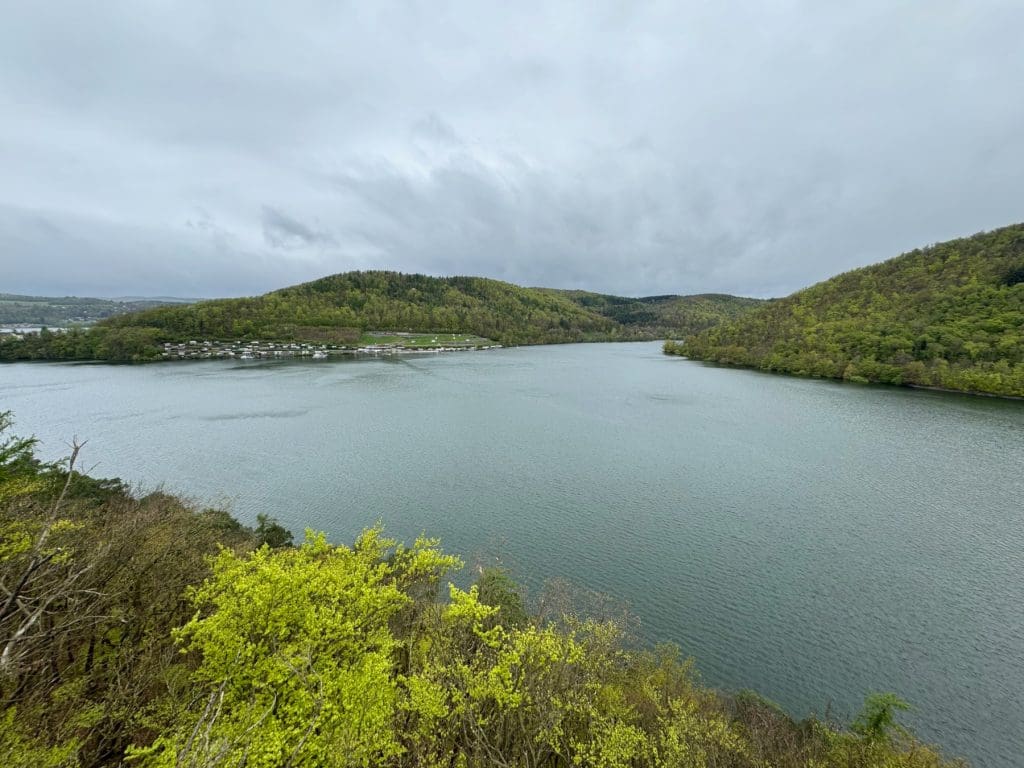
Tree Top Walk
After such a full day, it was perhaps not surprising that our second full day in Edersee was slightly more sedate.
This started with a real high. Sven drove us to the Tree Top walk on the opposite bank of the lake.
The 250-metre long walk is fully accessible. Debbie and Zoltan took their own wheelchairs up the same ramp as the rest of us walked. This allowed them to rise to 30 metres above the forest canopy to benefit with wonderful views of the lake, which was quite brilliant despite the weather turning against us.
Hercules Terrasse and Wilhelmshöhe Palace, Kassel
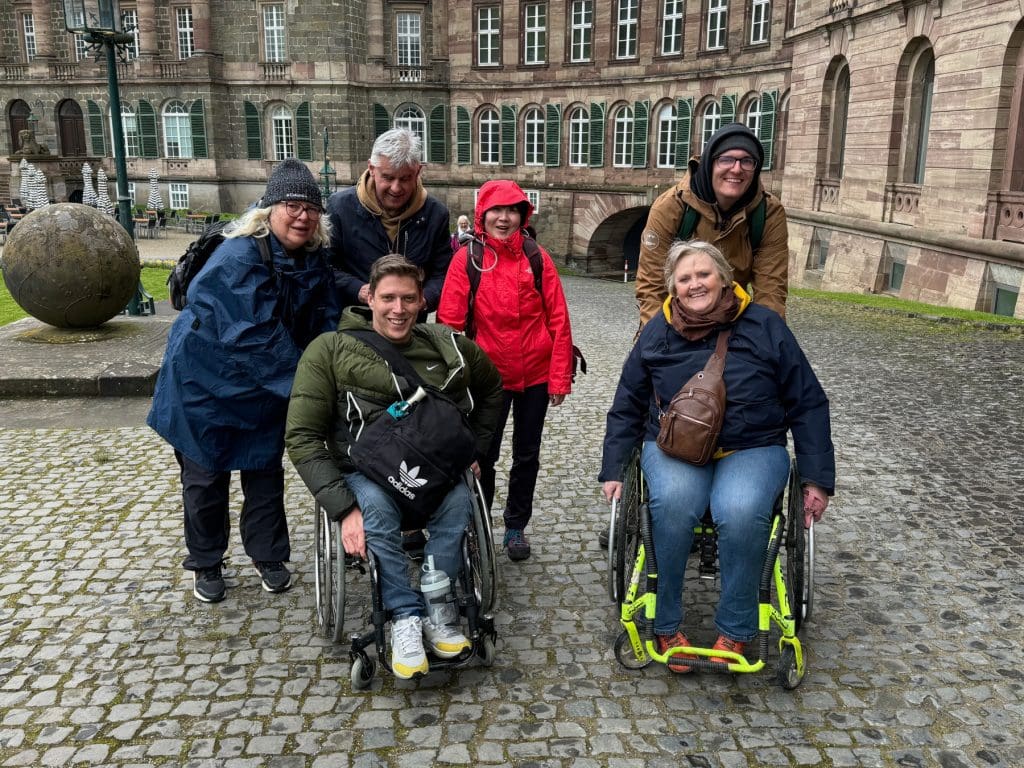
Up to this point our itinerary had revolved around the lake, but later that morning we departed to the town of Kassel, which contains Europe’s largest UNESCO mountain park.
Built in 1717, the statue of Hercules rises majestically some 500 metres above the town. We had lunch at the terrace next to it, enjoying the most incredible flammkuchen, a thin crust pizza typical of the Alsace region.
After this we went to Wilhelmshöhe Palace, which was built as a summer house by the Electors of Hesse-Kassel towards the end of the 18th century. A water display leads down from Hercules to the palace. Originally it was meant to be constantly flowing, but plans were curtailed somewhat due to a lack of water. Now it only flows in the summer months (from May) and at select times, so make sure you book ahead. The palace is now a museum with a wonderful collection of art and artefacts, including some excellent Reubens and Rembrandts.
For many years I have written about sustainable tourism without really considering accessibility. The last few days have shown me how accessibility is a vital element in achieving meaningful sustainability in tourism. As Debbie pointed out there is also good money in it, with lots of tourism dollars spent each year on accessible tourism.
It is most unlikely I would ever have visited Kellerwald-Edersee National Park without its wonderful accessible tourism initiatives. I am so glad, that I have. As a person who has elected not to eat meat, next time I am served a vegetarian soup with bits of meat floating in it, I hope that I think of Debbie and have a smile on my face. Otherwise, I might become even angrier.
Where to Stay in Edersee
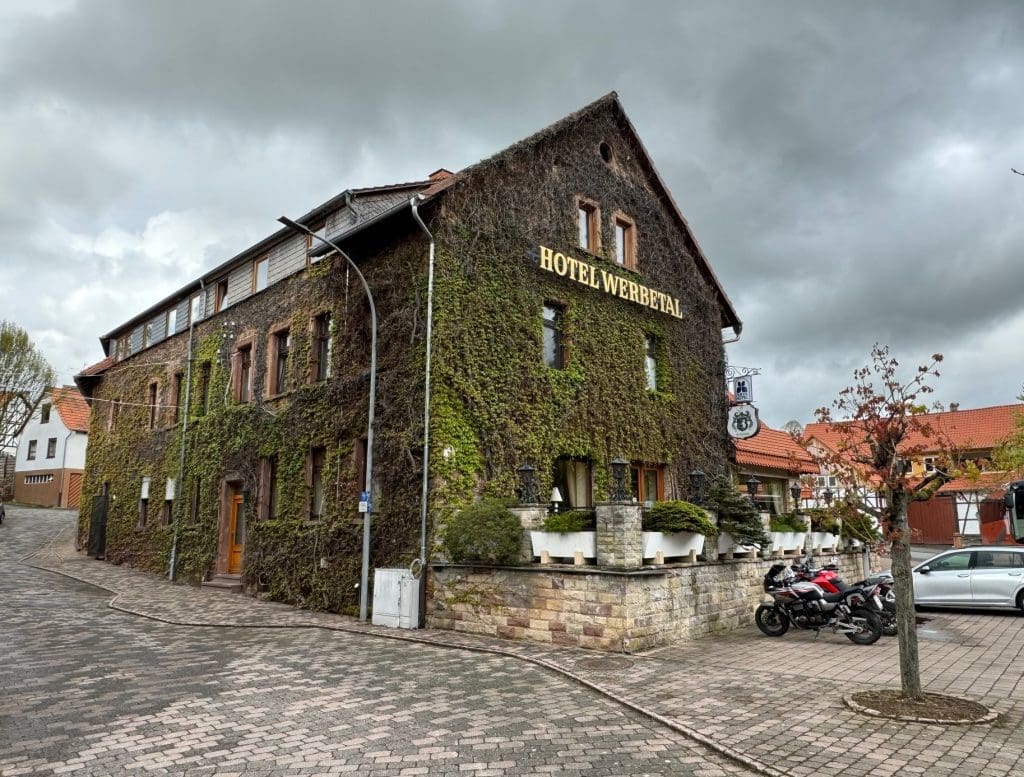
Mark stayed at the Flair Hotel, Werbetel, which had great views of the Reiherbach lake in the Waldeck Natural Park. This spacious family run hotel is friendly and fully accessible. It comes highly recommended.
Further Information on Edersee and Hesse
For more inspiration on what to do in Edersee and Hesse, go to the local tourism website, and for what to do in Germany go to www.germany.travel.
Accessible Tourism in Germany
To discover more about accessible tourism and nature in Germany please go to Nature for everyone: accessible travel in nature and national parks – Germany Travel.
